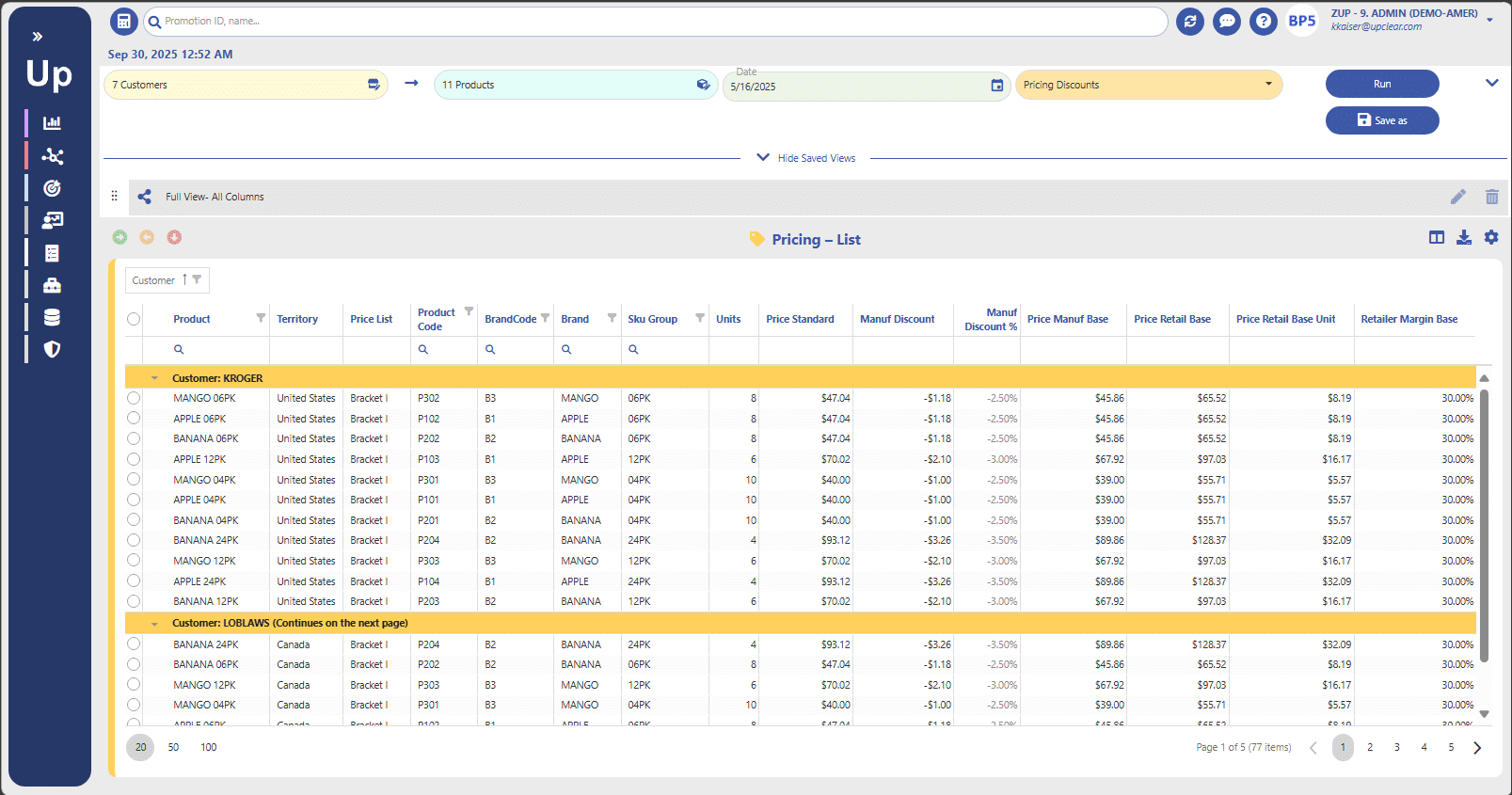Import customer prices used in BluePlanner. Plan non-promotion long-term agreements and other costs to completely forecast customer cost-to-serve.

When creating account plans in BluePlanner, we first forecast, then actualize revenue, spending and other KPIs. We also pass pricing conditions (i.e. invoiced allowance) from BluePlanner to your Enterprise Resource Planning (ERP) system. All of these depend accurate pricing being present in the platform. Because different brands have different needs and requirements, we have- over time- developed extensive pricing capabilities.
First, pricing can be entered and managed directly in BluePlanner. While pricing typically originates and is managed in ERP, in a few cases clients have set prices in BluePlanner, then extract them for use in other systems. What make this appealing is the workflow engine pervasive in BluePlanner that facilitates approvals of proposed pricing/price changes.
On the import front, we support multiple scenarios. Within a territory (i.e. country) we can import a single, “universal” list price, multiple prices lists (e.g. brackets, Alaska/Hawaii pricing etc.), customer discounts managed in other systems, and/or customer-specific list prices.
BluePlanner’s ability to manage multiple territories within one domain also enable support of pricing for multiple countries and currency conversion.
Retailers or operators that purchase product from a distributor (“indirect” customers) purchase their product at a cost that includes an upcharge. Pricing in BluePlanner reflects this. When planning indirect customer promotions, both prices are incorporated. The price the distributor pays is presented and is used in calculation of brand financials. The price the indirect customer pays to the distributor -which includes an upcharge-is also presented. Billback allowances are entered against this price, and this price is used in calculation of retailer financial metrics.
Also important for price analysis across customers and products is a planned retail price. BluePlanner supports setting or importing retail prices in the same way customer prices are managed.
Different import and export methods are supported by UpClear and BluePlanner. This includes APIs, flat file SFTP exchange, and self-service use of an upload tool. See our Data Enablers page for more details.